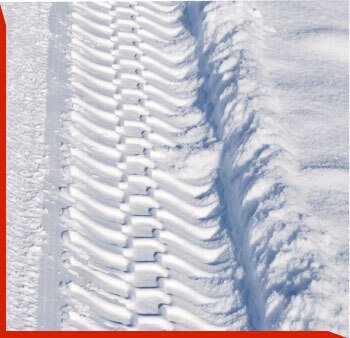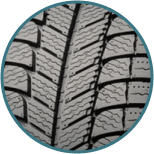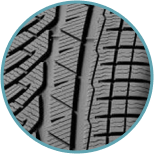



These tires are ideal for drivers wanting to maximize performance in challenging winter driving conditions. They feature soft and pliable tread compounds that trade some handling in dry and wet conditions to deliver exceptional snow and ice traction.
Optimal tires for drivers wanting to maximize performance in challenging winter driving conditions. These tires feature soft and pliable tread compounds that trade some handling in dry and wet conditions to deliver exceptional snow and ice traction.

These tires are ideal for drivers of sporty vehicles looking to maintain the handling and performance capabilities of their vehicles during the cold weather months. They aren't as well performing in deep snow as a conventional winter tire but offer significantly better dry and wet weather handling.
Optimal tires for drivers of sporty SUVs looking to maintain the handling and performance capabilities of their vehicles during the cold weather months. These tires aren't as well performing in deep snow as a conventional winter tire but offer significantly better dry and wet weather handling.
Winter tires stop faster than All-Season (3-season) tires.
The more your tires wear the less traction they naturally have. When comparing winter tires to all-season tires, the all-season tire looses its ability to corner once their tread has worn below 50%. That can lead to understeering or oversteering. This specialized traction also helps you stop faster keeping you safer and improving your reaction time on snowy and icy roads.

The best practice for winter packages is to select the smallest diameter rim such that it doesn’t interfere or contact the vehicle’s braking system. All packages supplied by our dealership are guaranteed to properly fit your vehicle.

Most but not all vehicles today come equipped with TPMS or a Tire Pressure Monitoring System. These systems either directly or indirectly measure the pressure in your tires and alerts you in the event of tire pressure loss. Should the tire pressure fall below a certain level, a warning light is presented to the driver giving the driver time to fix the tire. The early detection can save the tire from being driven on flat and help avoid an accident due to severely under inflated tires.

There are two types of TPMS in the market: direct and indirect. Direct TPMS uses a physical pressure sensor in the wheel to monitor tire pressure. Indirect TPMS uses the wheel speed sensors used by the anti-lock brake system to indirectly measure pressure. The speed sensors measure the rate of revolution each wheel is making. When a tire loses air it becomes slightly flat and effectively a smaller diameter. It then must rotate faster than the other wheels in the vehicle. This is detected by the speed sensor and the owner is alerted of the tire pressure loss.
Our winter package quotes include sensors should your vehicle need direct sensors to measure pressure. That said, TPMS sensors are not required in Canada so are optional and you can elect to not purchase them. Depending on the vehicle and the cost of the sensor this can save you $250-$400 on the cost of a winter tire package. The downside of this is of course that for most vehicles with the TPMS no longer operational the warning light will show up continually on the dash. You’ll have to monitor tire pressure by every so often looking at your tires and measuring the pressure using a gauge.